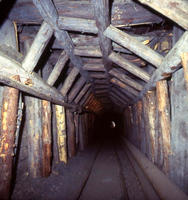You are in: Europe -> Spain -> Heritage of Mercury.... , and traditional search or Image Gallery will yield results of this site only
Heritage of Mercury. Almadén and Idrija
| Site number: | 1313 |
|
| Type of site: | Cultural | |
| Date: | 1490 - | |
| Date of Inscription: | 2012 | |
| Location: | Europe, Slovenia, Spain; Almadén, Idrija | |
Up to 75 images are shown here. Click on each for more details or on Image Gallery for more images.
| Description: | The property includes the mining sites of Almadén (Spain), where mercury (quicksilver) has been extracted since antiquity, and Idrija (Slovenia), where mercury was first found in AD1490. The Spanish property includes buildings relating to its mining history, including Retamar Castle, religious buildings and traditional dwellings. The site in Idrija notably features mercury stores and infrastructure, as well as miners’ living quarters, and a miners’ theatre. The sites bear testimony to the intercontinental trade in mercury which generated important exchanges between Europe and America over the centuries. Together they represent the two largest mercury mines in the world, operational until recent times. --WHMNet's description is from WHC Site, where additional information is available. | |
| Heritage of Mercury. Almadén and Idrija is a joint UNESCO’s World Heritage site in Almadén, Spain, and Idrija, Slovenia. The property encompasses two mercury mining sites. In Almadén mercury has been extracted since Antiquity, while in Idrija it was first found in 1490 A.D. The Almadén site includes buildings relating to its mining history, including Retamar Castle, religious buildings and traditional dwellings. The site in Idrija notably features mercury stores and infrastructure, as well as miners’ living quarters, and a miners’ theatre. The sites bear testimony to the intercontinental trade in mercury which generated important exchanges between Europe and America over the centuries. The two sites represent the two largest mercury mines in the world and were operational until recent times. Almadén is home to the world's greatest reserves of cinnabar, a mineral from which mercury is extracted. Cinnabar was first used for pigment by the Romans. Later, the mineral was used mostly in medicine and alchemy during the Arab domination of Spain. Idrija (Italian and German: Idria) is a small town and municipality in the Goriška region of Slovenia. It is known for its mercury mine (currently in the process of closure) and lace. Near Idrija there was an archeological find of an approximately 43,100 year-old juvenile cave bear femur at Divje Babe, which may be a prehistoric flute. --Wikipedia. Text is available under the Creative Commons Attribution-ShareAlike License. | ||
| Almadén, Spain, is a town and municipality in the province of Ciudad Real, within the autonomous community of Castile-La Mancha. The town is located at 4° 49' W and 38° 46' N and is 589 meters above sea level. Almadén is approximately 200 km south of Madrid in the Sierra Morena. The name Almadén is from the Arabic word المعدن al-ma‘din, meaning 'The Metal'. Originally a Roman (then Moorish) settlement, the town was captured in 1151 by Alfonso VII and given to the Knights of the Order of Calatrava. The mercury deposits of Almadén account for the largest quantity of liquid mercury metal produced in the world. Approximately 250,000 metric tons of mercury have been produced there in the past 2,000 years. --Wikipedia. Text is available under the Creative Commons Attribution-ShareAlike License. | ||
| Source: | http://whc.unesco.org/en/list/1313 | |
| Reference: | 1. UNESCO World Heritage Center (http://whc.unesco.org/en/list/1313). 2. Wikipedia. | |


























